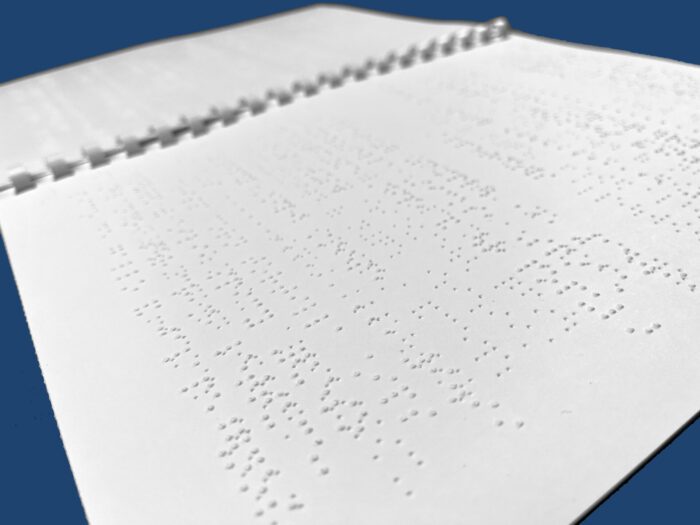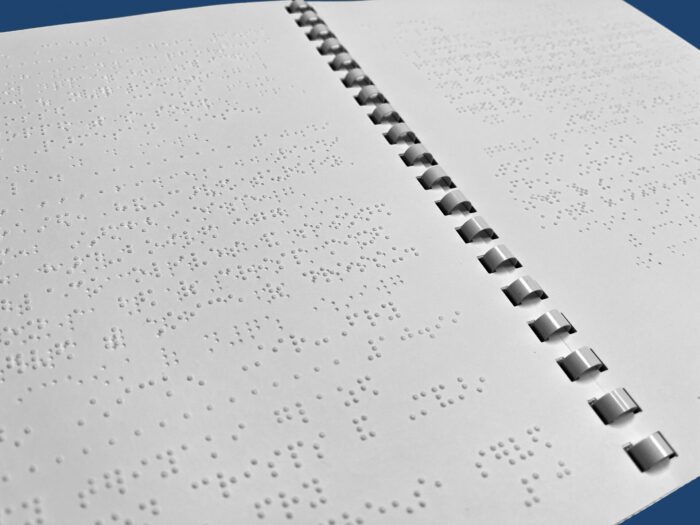What is the Turnaround Time on Braille Printing?
Published on
People often ask how long printing a braille document takes. The answer is simple but tends to evoke more questions.
The truth is, it depends.
Repetitive documents, like statements and notices, can be automated. The turnaround time on automated documents can be as short as one day or up to five days, depending on the level of automation that can be achieved.
It may take up to 20 business days to transcribe, emboss and bind larger documents. The length of time depends on the number and complexity of pages.
Why affects time?
Just as it is with standard print, the turnaround time depends on variables such as the number of pages, the formatting requirements, output choices, and printing methods.
The same is true for braille printing.
It’s critical to create a document that best serves your customers’ needs and makes your company look good.
The braille printing process starts with transcription.
Transcription begins with a careful, detailed review of a printed text document.
Did you know that print and braille are not a 1-to-1 ratio?
A single page of text, with no tables or charts or complex components, can expand to 3-5 pages of braille. A page with a complex table, when properly formatted, may expand to more than 30 pages of braille.
Transcription also considers the overall formatting of the document. For example, a restaurant menu has different formatting than a bank statement. Taking all of a document’s components into consideration allows for user-friendly braille.
Complex transcriptions for elements like charts or tables affect turnaround time. But the extra time is worth it to deliver a quality braille document.
After transcription, it’s time to emboss.
What many people call “braille printing” is actually called embossing.
Braille embossers are similar to regular printers in that they vary in speed. Some embossers work much faster than others and newer embossers tend to be more efficient.
They’re also similar in the way they receive files. However, instead of putting ink on paper, tiny hammers create raised braille dots.
How an embosser’s hammers hit the braille paper affects the shape and quality of the braille dots. The right hammer impact is critical to creating a document that’s comfortable to the hand and easy to read. Faded or irregular dots are harder for the reader to decipher.
Receiving a poorly embossed document is a bit like a sighted person receiving a faded document that has been copied multiple times on a machine running low on toner. It’s difficult to read and reflects poorly on the organization.

The final touches: finishing and binding.
The paper size and quality make a difference for the braille reader.
Braille paper needs to be heavy enough to hold the braille dots while not feeling too rough to the fingertips.
The best paper size is often dependent on the document though many braille readers prefer letter-sized paper. Why? Because the open braille document doesn’t take up as much space as larger paper sizes.
The binding of a braille document can make a significant difference in its readability. Braille documents are much easier to read when placed flat on a desk or table.
Properly binding a braille document with a GBC Comb binding or coil binding is ideal.
Some documents call for special binding or finishing options. For example, it’s common to fold and staple smaller documents.
The binding method may impact how quickly you’re able to get your braille documents. Some methods are easier to execute than others.
So, how long does braille printing take?
The answer is still, “It depends.”
All of these variables, and more, affect the braille printing process. But, now you have the knowledge to ask about and understand your braille document’s turnaround time.
![Include everyone in life and business with accessible documents. See how Braille Works solutions can help. Learn more. [Links to Braille Works request a quote web page]](https://brailleworks.com/wp-content/uploads/2017/08/Learn-More-CTA-700x253.png)
Categorized in: Accessibility, Informational
This post was written by



Comments are closed here.